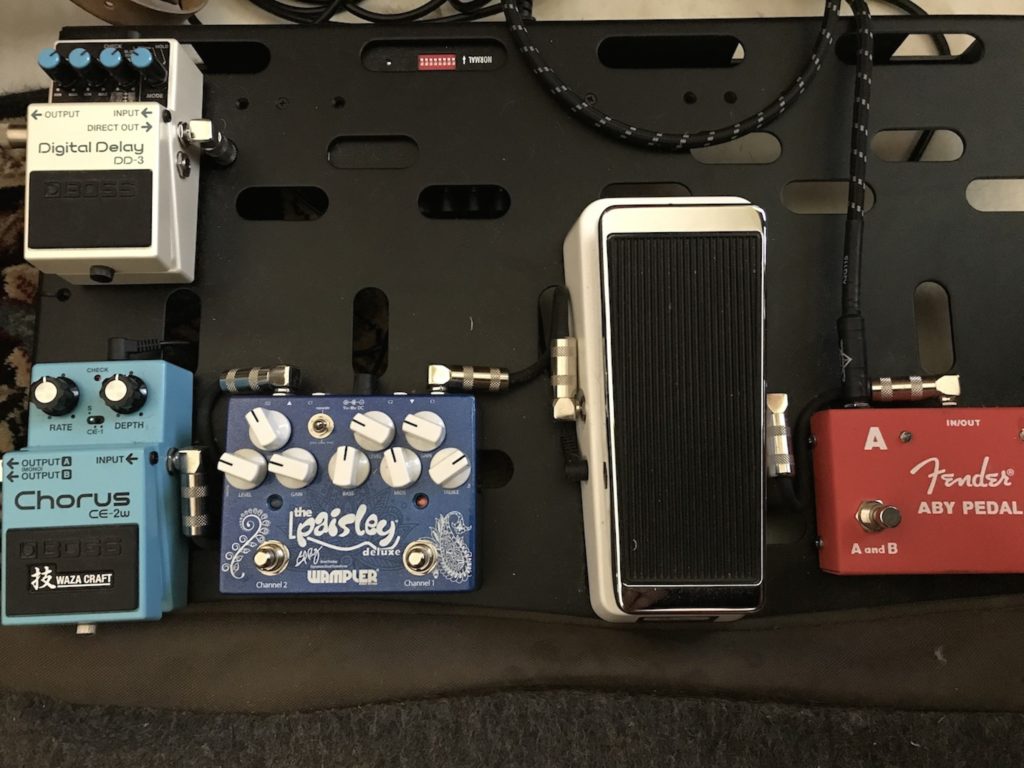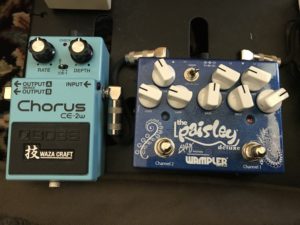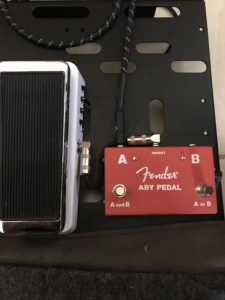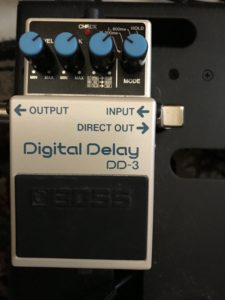To Pedal of Not To Pedal – Part II

A Pedal Board
This is part 2 of our article on purchasing and setting up a pedal board (See Fretmentor’s Blog entitled “To Pedal or Not To Pedal Part 1”, where we talked about putting a pedal board together and the power supply required for the board. Next, we look at some more details when making your purchase and constructing the right Pedal Board that meets your needs.
1. Start Small

Chorus & Overdrive Pedal
Don’t run out and buy $500 worth of pedals. Start with two or three pedals. One overdrive or distortion pedal, one modulation pedal (like chorus) and one ambiance (reverb or delay) is enough to get started. Get used to them, play with the settings, the tone the level and experiment with using them in combination. Once you had a taste, you can start thinking about adding more pedals to your chain.
2. There are no Rules
Finally, there are no rules. With that said, here are the rules. Certain pedals are generally considered to sound better either in front or behind other pedals. The general order is still just a consensus opinion. For every one of these rules, you will find some famous guitarist that bucks the trend and uses a particular pedal in a different order to get a different sound. So, while these are the rules, feel free to break them at any time.

Wah Pedal & A/B Switch
Expression pedals usually go first. So from the guitar, usually the first pedal is an expression pedal, like a wah pedal or other pedals that amplify or add sound. These allow you to run other behind the expression pedal and control the intensity of the effects from the other pedals further back in the chain.
Next usually comes pedals that change the tone of the guitar. These are overdrive pedals, distortion pedals and compression pedals – the bread and butter of your pedal chain. The order of these pedals is your preference. The compression pedal is commonly put in front of the overdrive and distortion pedals to increase the signal to these pedals and improve their sustain. Since the drive/overdrive and distortion pedals change the tone, they are usually put in the front so that the altered tone can be modulated and altered through the pedals later in the chain. Multiple tone pedals are common. Overdrive pedals like the BOSS Blues Driver create a very different tone and sound from other types of drivers like the OCD pedal or the Tube Screamer. Also, your tone pedals can be pre-set to different tones. You can keep one overdrive pedal fairly clean, one really dirty and one in the middle, and switch between them without spending time reseting the pedal before starting a different song.
The tone pedals produce a lot of noise and can create a fair amount of feedback and hissing from the amp. Especially if more than one is running. So, a noise suppression pedal is often placed after the noise-producing tone pedals and before the next pedals in the chain. Some people put the noise suppressor at the very end of the chain. You will need to try it both ways to see what works for you.

Digital Delay Pedal
After the tone pedals come the modulators. These are pedals like flangers, chorus phasers and rotary pedals. These pedals take the sound, altered by the overdrive or distortion and modifying it.
Finally, comes the ambiance pedals. These are delay and reverb pedals. These are the last things that should happen to the sound before it reaches the amp. While most people put the delay before the reverb, I’ve been experimenting at both. I’m still not sure which sounds better.
I recommend starting with these rules, and then experiment moving your pedals around in the chain – especially the noise suppressor pedals and the reverb/delay pedals. The variations are endless depending on your taste and the type of music you want to play. Your pedal board should alway be a work in progress. That’s what makes it fun. So, good luck!
Andrew Baumann, a fretmentor student and attorney by trade, contributed this article.
